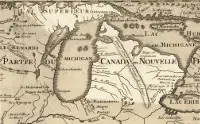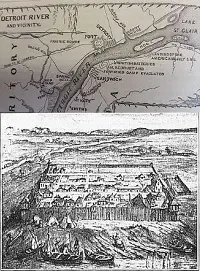The Making of the 50 States: Michigan
Part 1: In the Beginning The Woodland culture permeated what is now Michigan before Europeans arrived. Among the Native American tribes that Europeans encountered were the Chippewa, Fox, Huron, Kickapoo, Menominee, Miami, Noquet, Ottawa, Potawatomi, and Sauk. The Chippewa, Ottawa, and Potawatomi were often referred to as the "Three Fires." The name of the state comes from a Chippewa word that means "great lake." The early hunting and gathering culture gave way to an agricultural one, with Native Americans growing corn, rice, and squash, among other things. They made their clothing from animal skins and their tools from animal bones. 
The first European known to visit these Native Americans is thought to have been the Frenchman Étienne Brulé, in 1618. Brulé, along with a companion named Grenoble, passed through the area on an assignment from Samuel de Champlain, who was further north, in what is now Canada. These explorers were in search of a northwest land route to China. French missionaries came to the area in the 1640s and then established a mission in 1660. The famed explorer Jacques Marquette established the area's first permanent settlement in 1668, at Sault Ste. Marie; three years later, he founded St. Ignace. The first of a number of forts came along that year as well, as a way for the French to check the growing English influence in the area. 
The most famous of those forts was probably Fort Pontchartrain, founded in 1701 by Antoine de La Mothe Cadillac. Its full name was Fort Pontchartrain du Détroit; it was often shortened to Fort Detroit. Detroit was a French word meaning "the straits"; the fort was on the Detroit River and gave the French control over traffic in both nearby lakes, Erie and St. Clair. The modern-day city of Detroit is situated where this fort once was. The fort was the target of several assaults by Native Americans, at times augmented with British forces, through the years. The fort saw no action during the French and Indian War but was part of what Great Britain owned once the war was over and the 1763 Treaty of Paris was signed. That same year, a group of Native Americans led by the Ottawa chief Pontiac attacked the fort but did not capture it. Next page > The Rest of the Story > Page 1, 2 |
|
Social Studies for Kids
copyright 2002–2024
David White




